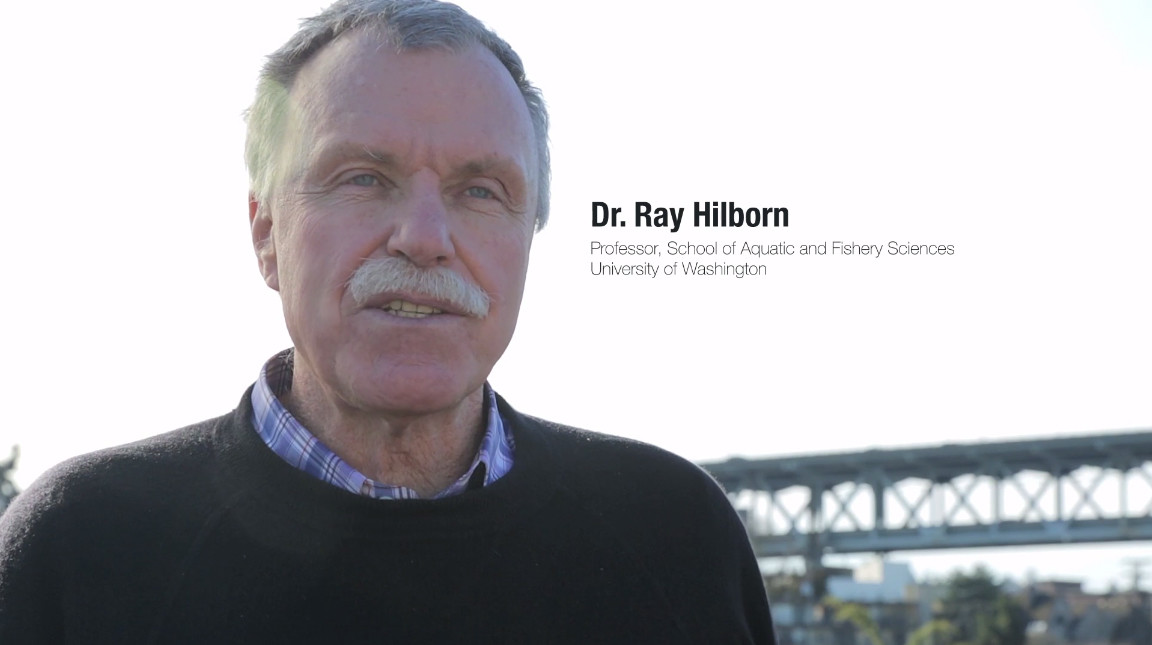Ray Hilborn study disputes previous findings on forage fish

A new study has been published today by a scientific group led by University of Washington fisheries researcher Ray Hilborn that disputes previous findings on the impact of human and natural predation on forage fish such as anchovies, sardines and herring.
The study, published in the scientific journal Fisheries Research, found that human fishing for forage fish does not have as great an impact on the food chain as previously thought, given that humans typically catch fish of much larger size than those typically hunted and eaten by non-human species. The study also decouples the link between the size of forage fish populations and the populations of species that predate on forage fish.
“What we found is that there is essentially no relationship between how many forage fish there are in the ocean and how well predators do in terms of whether the populations increase or decrease,” Hilborn said in a video explaining the study’s findings.
The study was co-authored by the University of Washington’s Ricardo O. Amoroso and Eugenia Bogazzi, Olaf P. Jensen of Rutgers University, Ana M. Parma of the Centro Nacional Patagónico, Cody Szuwalski of the University of California Santa-Barbara and Carl J. Walters of the University of British Columbia. It was funded in part by the National Coalition for Fishing Communities and was supported by the IFFO, the marine ingredients trade group.
It takes particular fault with the methods used by a 2012 study on forage fish by the Lenfest Ocean Program, which is managed by the Pew Charitable Trusts.
“The Lenfest conclusion that predators rise and fall with their prey populations is simply not true. It’s not empirically true,” Walters, one of the authors of the original Lenfest study, said. “One of the things we did in this study was collect together a lot of time-series patterns of predator abundances and forage-fish abundances, and we just didn’t see the correlation, nor have other scientists who have looked at this objectively.”
Predators “have developed some strategy of how to cope with the natural variability” of forage fish populations, according to Amoroso, the study’s second author.
The new study finds that previous research overlooked the natural variability of forage fish and the importance of spatial distribution in its analysis. As populations of forage fish rise and fall, their distribution expands and contracts, meaning predators are still able to find stable sources of food even during cycles of relative forage fish scarcity, Hilborn said.
“The Lenfest conclusion that forage fish fisheries can only be managed successfully …through very precautionary policies and reduced harvesting is not based on any fact,” Walters said. “No fisheries manager should pay any attention to that [conclusion]. It is, in hindsight, a very irresponsible recommendation.”
The study also notes fact that predators tend to target small forage fish that are largely untouched by fishing activity.
“It’s very important to consider the size of the fish eaten by predators and the size of the fish taken by the fisher,” Hilborn said. “The Lenfest report didn’t have the kind of size structure in it so it could look at whether the fishery was taking different-[sized fish] than the predators.”
The study concludes by recommending fisheries managers consider forage species on a case-by-case basis to ensure sound management.
“Models used in previous analysis were frequently inadequate for estimating impact of fishing forage species on their predators,” the study said. “There is a need for a much more thorough analysis of the nature of recruitment trends in forage fish. That there are major environmentally-driven regime changes for many species is unarguable, but what exactly changes is unclear.”






Share